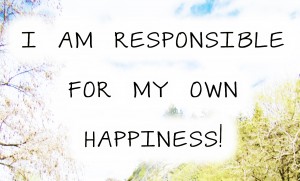Sarah Lockwood is a concerned parent and former social worker. Having worked with the public for decades and after watching her own daughter struggle with addiction, Sarah knows all too well the devastation that can be caused by drug and alcohol abuse. Sarah’s daughter is now in recovery, but her experiences with substance abuse inspired Sarah to get involved with ThePreventionCoalition.org. She plans to spread awareness and support through her work for others dealing with addiction. While Sarah devotes a lot of time to the Coalition, she makes sure to relax and enjoy the small things in life, as every day is a gift.
Nothing tests us more than a personal emergency that causes severe anxiety, feelings of depression, or even thoughts of suicide. When a personal crisis has become so devastating that you feel there is no way out, asking for help may seem out of the question. You may be embarrassed or ashamed about having a problem. You don’t want to let people down, and you don’t want to be judged. While these concerns are valid, there are many avenues through which you can reach out for help without being subject to judgement or shame.
Getting Assistance for Alcohol Abuse
Many people battle some kind of problem with alcohol. Some have issues with binge drinking or alcohol addiction, which are serious concerns.
According to the National Institute on Alcohol Abuse and Alcoholism, “approximately 17 million adults ages 18 and older have an alcohol use disorder (AUD) and 1 in 10 children live in a home with a parent who has a drinking problem.”
When people think about treatment for alcohol abuse they think of a 12-step program. You can call Alcoholics Anonymous (AA) to talk with someone who may be able to help you work through your problems or help find sources of your community. You could also attend an AA meeting. It’s important to remember it’s anonymous, so you are able to choose what you share about yourself within your own level of comfort .
Does your employer offer an assistance program? Call or speak with them to find out what programs and services are offered through this benefit. Seeking out a therapist or speaking with a counselor at a treatment center are other options when you’re not sure where to turn. If you know someone who has gone through recovery and feel comfortable, others who have endured similar struggles are often more than willing to offer a helping hand to someone else who is navigating the journey of recovery.
Finally, turning to your primary care physician is a helpful starting point. Your doctor can start evaluating you to determine the types of treatments that are best-suited for your unique situation. If needed, they can refer you to specialists who can provide treatments and services to aid you on the road to recovery.
Seeking Help for Suicidal Thoughts
It is crucial to seek help if you’re having thoughts of hurting yourself or suicidal thoughts. If you or someone you know are having suicidal thoughts, please seek help immediately. Call 911 or the National Suicide Prevention Lifeline at 1-800-273-TALK (8255). If you’re not currently in danger, there are resources on the internet to help find support groups and therapists to help you through these hard times.
If you’re having a difficult time, and are not sure what to do, contact a close friend or family member who might be able to talk with you and help relieve some of the stress in your life. Although loved ones can often be supportive, not all of them know how to be helpful in these types of circumstances. You may feel more comfortable speaking with your doctor, sharing your struggles with a therapist or support group, or speaking to a professional over the phone. Don’t forget, seeking help is (always) a “sign of strength.”
Find Help Now
If you’re battling alcohol abuse or suicidal thoughts, or other crises in your life, it is important to figure out a way to get help. It is never easy to ask for help, but it is truly a sign of strength to do so. Remember that you aren’t alone – many people share similar struggles, and no one suffering from addiction, mental illness, or suicidal thoughts should ever feel ashamed or guilty.
Image via Pixabay by Counselling




